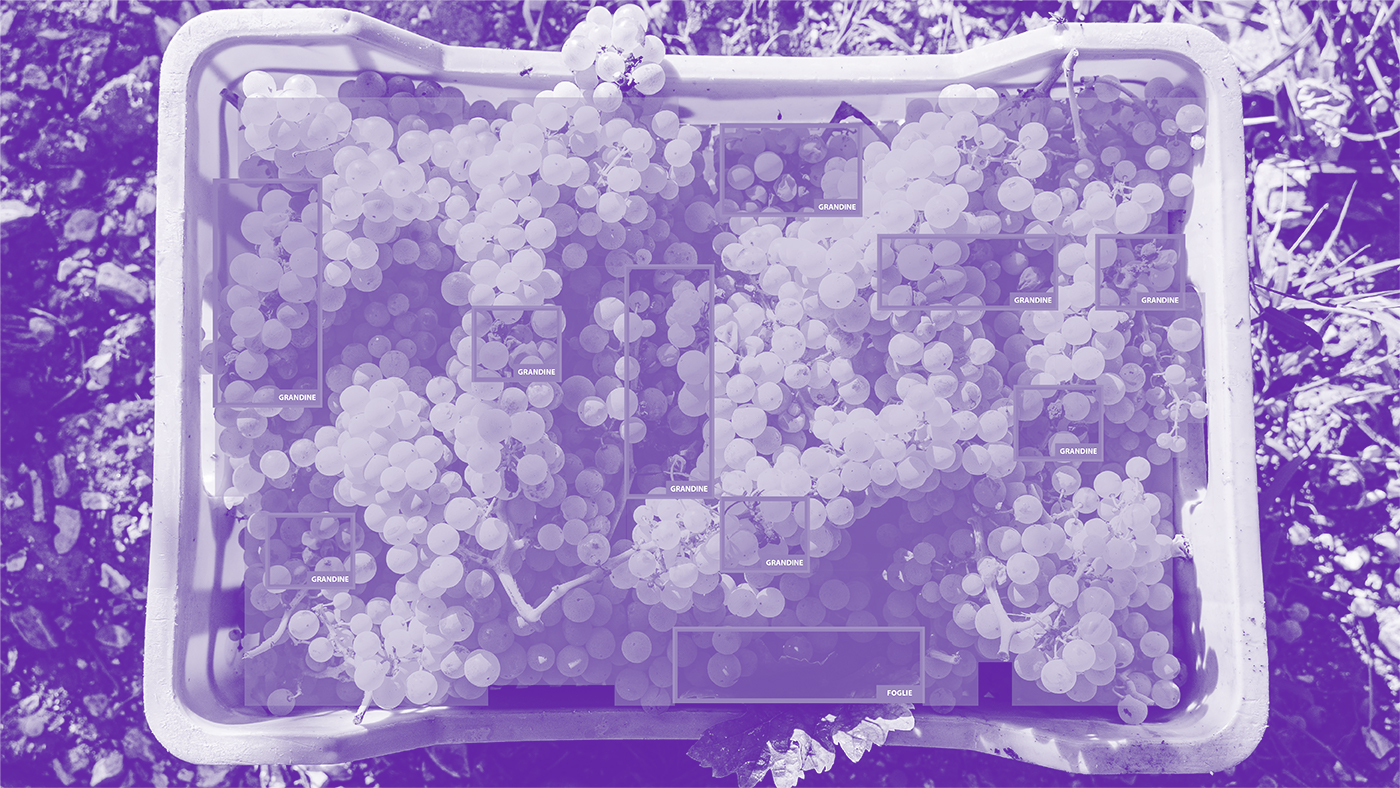Case Histories
Patch-based classification, food & beverage

Tasks
Patch-based classification
Image analysis
Annotation
Computer vision
Industry
Food & beverage
Wine production chain
Technologies
Request
Developing an artificial intelligence system to objectify the quality of grapes placed in boxes, as a control point at the entrance and as a management support for the raw material supply chain.
For the client, the system is an important building block towards product tracking (from the field to the bottle) and a key information element to improve production efficiency and ensure high quality standards for the end customer.

Starting point
The quality control of the incoming grapes was manual, carried out by skilled operators, taking a lot of time and with a high risk of error due to the subjectiveness of the judgment.
Solution
The system uses Deep Learning techniques for preliminary recognition of the quality of the grapes, based on automatic processing of top-down images of the boxes.
The classification model is based on splitting images into ‘patches’ and identifying individual patches as belonging to a specific class and then classifying the whole image.
The system also highlights specific areas of the image corresponding to portions of the product affected by foliage, downy mildew, rot, foreign material or other generic damage, providing a map of the higher or lower quality areas of the boxes.
A camera acquires images uploaded to AI-go Studio and used for training the classification model, which identifies within the images the presence of the different quality classes defined by the user. Using several rules, defined on the basis of quality parameters identified by the user, AI-go provides the overall classification of the grapes placed in boxes.
The model, trained and tested, was then deployed in production through AI-go Runtime, allowing the monitoring service, essential for maintaining the model performance and accuracy over time, and integrated with the customer’s data collection platform.

Results
Model training time ~ 30 minutes
Model inference time ~ 280 ms
Quality evaluation objectification. The quality evaluation is more reliable over time and it is possible to go back to the specific areas classified by the network to explain the result and to compare with others.
Better anomaly detectability – even in sub-optimal visual conditions.
Accurate detection of non-quality areas.
Data-driven approach. For the client, the system is an important building block towards product tracking (from the field to the bottle) and a key information element to improve production efficiency and ensure high quality standards for the end customer.
